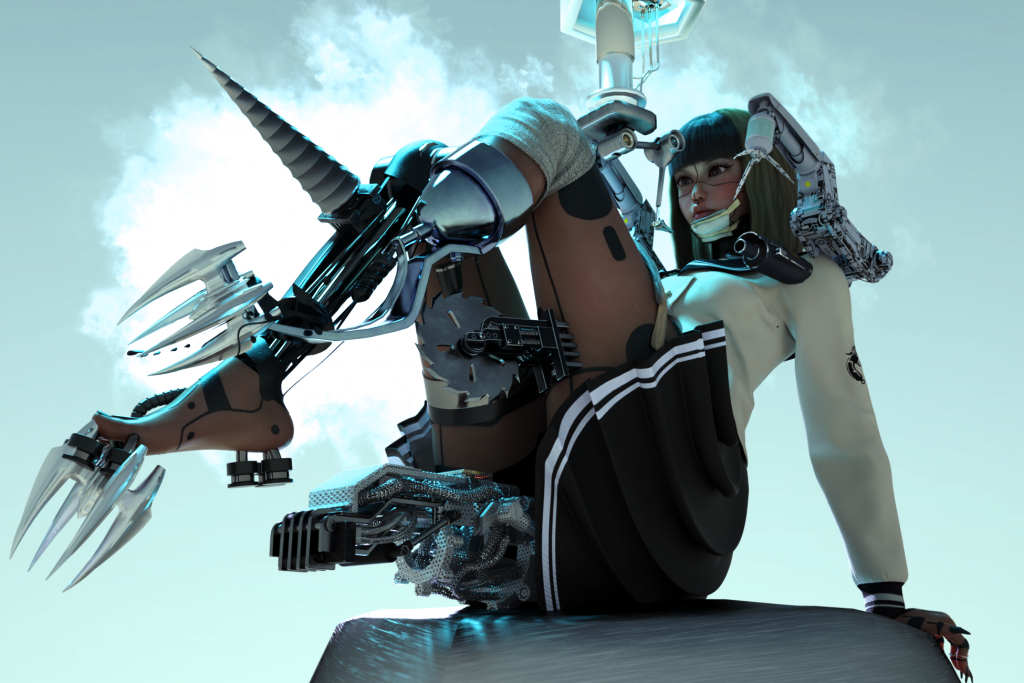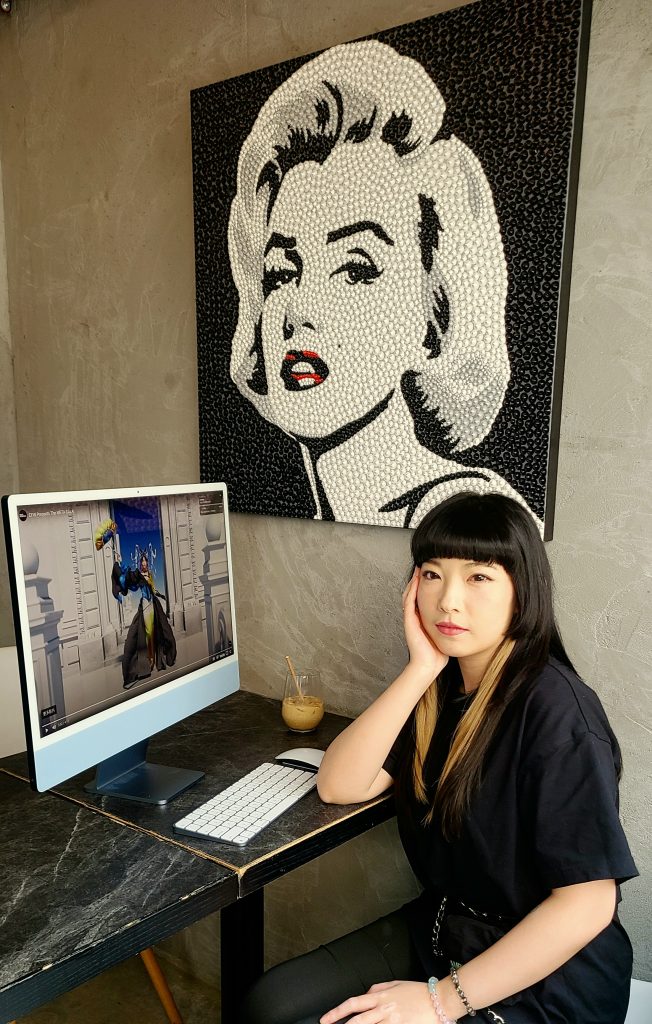#legend100
Transhuman influencer Ruby Gloom on blurring the lines of real and virtual
October 18, 2021
October 18, 2021
Ruby Gloom, a self-proclaimed ‘transhuman’, belongs to a new generation of influencers that are taking social media by storm: the virtual influencers. She talks to #legend about how having a digital avatar allows her to blur her physical and virtual identities, and how big brands are making themselves comfortable within the virtual sphere

Ruby Gloom – real name Chan Ka-yu – is a Hong Kong-born artist who started out as a fashion influencer at the tender age of 18. For someone who put herself so much out at the social media forefront as a young adult, these days – in her thirties – Ruby Gloom is more about staying behind her screen and letting her virtual alter ego take the limelight.

On a trip in 2016 with her significant other, rapper Dough-Boy, she started to play around with a 3D illustrator programme out of boredom as she waited for him to finish his event. It was at this moment that the stone got rolling. Teaching herself the intricate workings of how to create her digital counterpart was a very time-consuming process.
“It’s actually very interesting as I was a fashion influencer when I was younger and still in school,” Ruby Gloom says. “Most of the brands who approached me when I was a kid were mostly smaller street brands. When I eventually started going 3D I actually marketed myself this way. I know there aren’t many women in tech, especially Asian women. There aren’t many of them. And those who are present are mostly into 3D illustration. So I focused a lot on building my own avatar – who is Asian and also into fashion.”

The artist created her digital persona Ruby dressed in fashion from different brands. Eventually, those very brands took notice of her. “The first big brand I worked with is Fendi because I made an image who wore a hat with their fancy monogram – they really liked it.”
She also asserts that with big brands come more creative freedom. “To them, it’s not about the budget but creativity,” Ruby Gloom explains. “They just gave me all the freedom to do whatever I want and I mean it’s just amazing.”
Her current collaboration is with Adidas. “They give me 100 per cent freedom for a whole year,” she says, but it isn’t without any boundaries. “With brands like Adidas, they have their own image and concepts, which they provide me with. So I can be creative but within a concept – and this is actually better when you work with commercial stuff.”
And commercial pays. Recent works depict Ruby9100m – her virtual avatar – being invited and appearing at ger first-ever meta gala red carpet. On this occasion, she collaborated on a few NFTs (non-fungible tokens) on digital clothing with Fabricant, a digital fashion platform, and sold two of her NFTs for 1.08 Ether (about HK$20,000). Another is listed asking for around six Ethers, which translates to around HK$180,000.
Also see: Engineer and dance contest winner Anisha Thai wants women to have it all

Ruby Gloom used to create Ruby9100m on a built-your-own computer. These days she’s using Apple’s newest iMac, which she says help speed up the process of her creations and workflow. “It took forever to power up the programme I need to do my work, and each time I need to open a file it’ll take forever,” she remembers. “And the colour quality is better as well, as the iMac comes in 24-inch 4.5k retina display. It’s very important for me to know that Ruby comes out exactly as I see it on my own screen.”
If Ruby9100m was already gaining popularity before, the pandemic gave her the thrust she needed to gain recognition with leading brands who are themselves preparing to conquer the digital landscape at an accelerated pace.
In addition, she believes virtual (fashion) influencers can help negate production wastage and improve sustainability within the supply chain of the fashion industry. Factories send samples to design houses, Ruby Gloom explains, which they need a lot of to experiment with and redo their designs. In the end, it’s not only environmentally unviable but also very expensive.

When she created Ruby9100m, the artist wanted to create an avatar that can reflect the important things in her life. “As an artist, if you can express the emotions you have with yourself, then [the avatar] is not a character but an identity.”
There is also a more practical side to her employing her virtual self rather than using her actual image. “If you are talking about cyber security, with your photo there is not a lot [of security] on the web,” she says. Ruby Gloom revels in the anonymity her avatar provides her at times. “I want to connect with the world but that doesn’t mean that I want to be recognised all the time.”
Also see: Strategist and IG influencer Iris Yang cultivates her place of belonging
